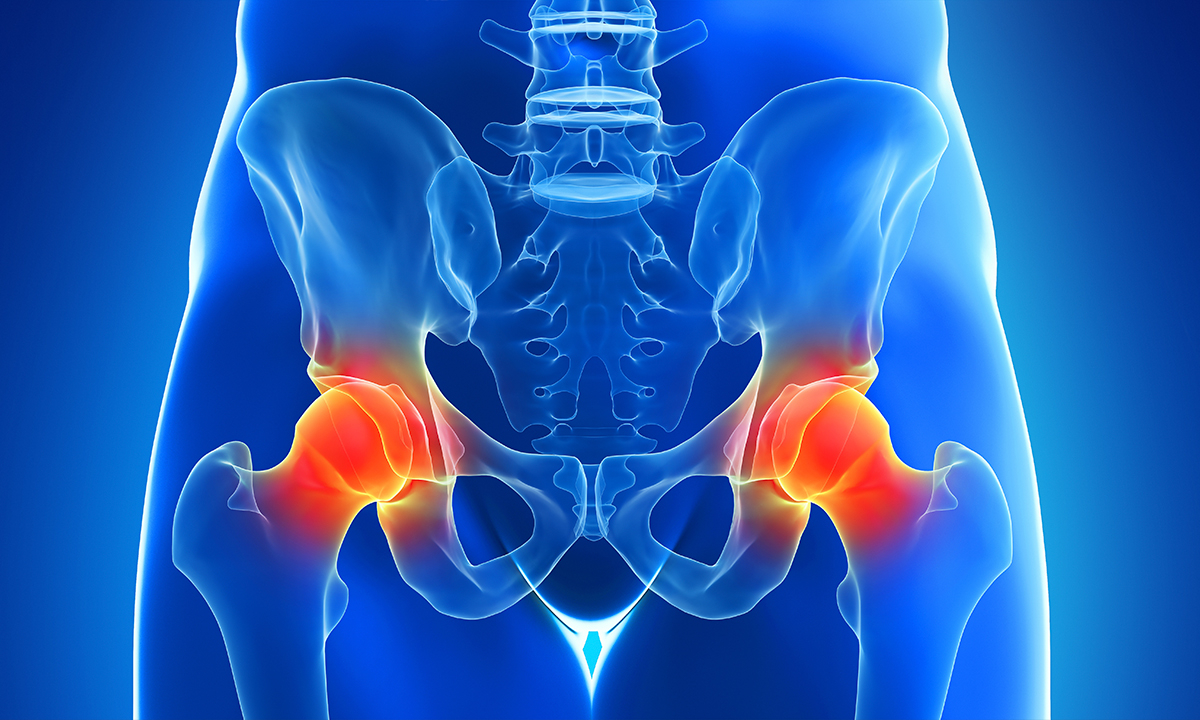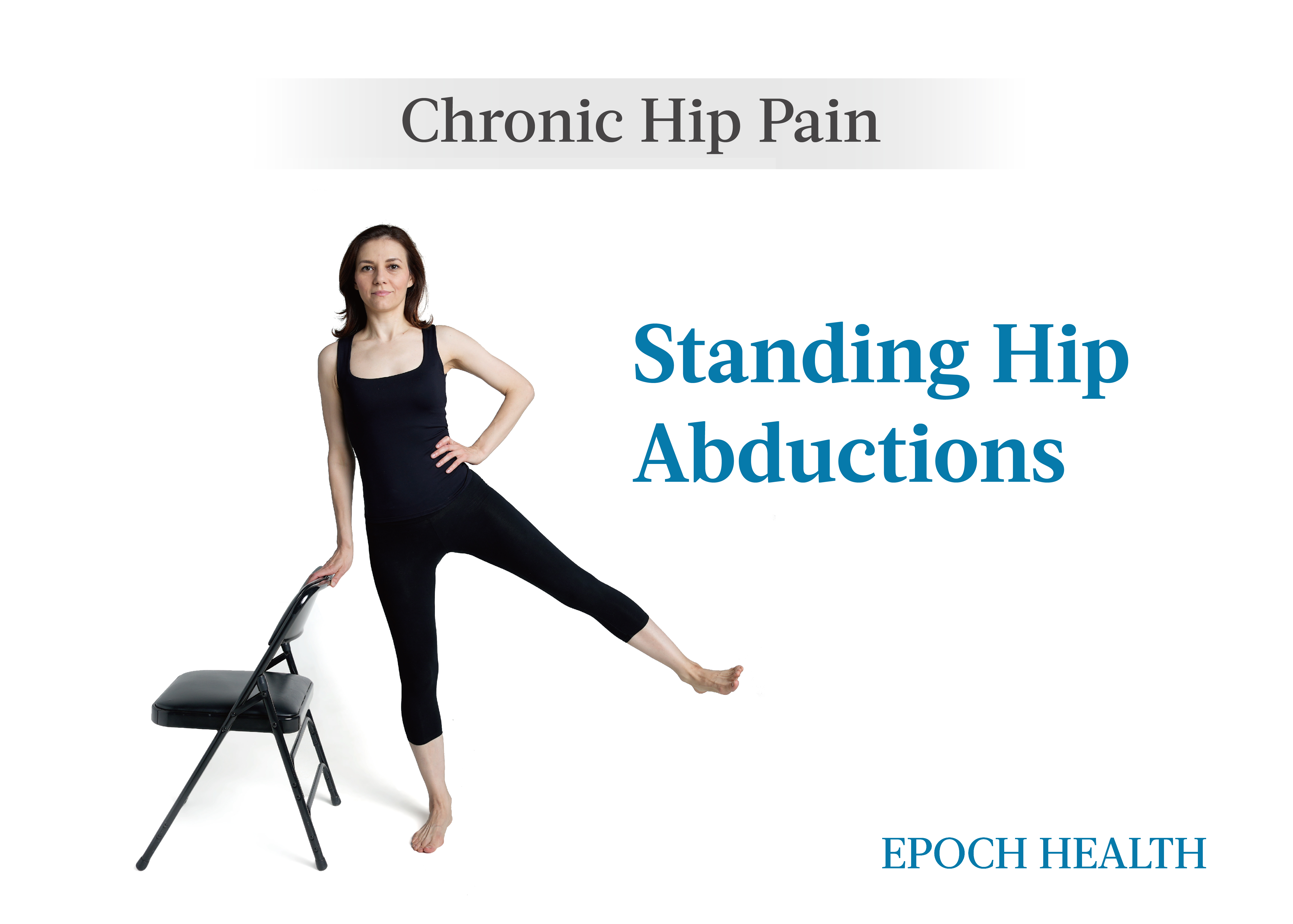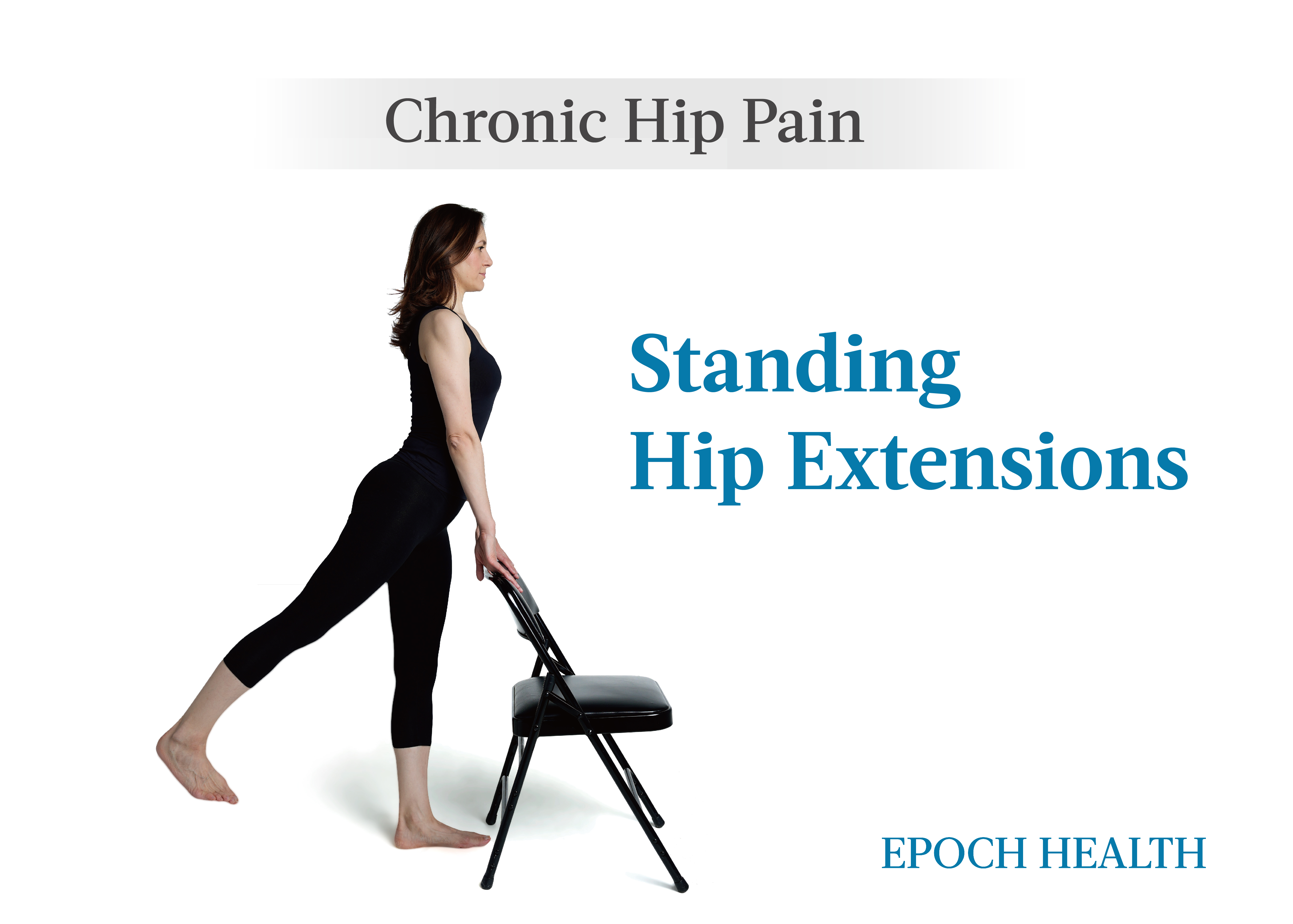


In this series, “Easy Exercises to Combat Chronic Pain,” occupational therapist Kevin Shelley focuses on common issues associated with chronic pain and simple exercises to strengthen weak muscles and enhance joint mobility, with the goal of helping you become pain-free.
The hip joint is a strong structure connected to large, powerful muscles. It’s the principal connection between your legs and your trunk. It allows for a great range of movement and is critical for maintaining your balance when standing.
The hip is constantly in motion while you are on your feet. It powers your steps, lets you negotiate the terrain, and helps maintain your balance, whether you are moving or standing still. The hip is the primary part of your body you sit on.
Hip pain can easily reduce your quality of life and limit your mobility. Worse, unilateral pain (pain on only one side of your body) can cause you to overcompensate and develop maladaptive walking patterns that can create other problems.
“The key to healthy hips is flexibility, strengthening, and core stabilization,” Heather Elliot told The Epoch Times. Elliot is a physical therapy assistant with 29 years of experience and expertise in soft tissue mobilization and postural restoration.
Thankfully, many people find that a regimen of safe, effective, and simple exercises can help them get their otherwise healthy hips free from pain.
The muscles of the hip are categorized into four groups:
The glute muscles are in our buttocks and include the tensor fasciae latae, gluteus maximus, gluteus medius, and gluteus minimus. They play a significant role in hip extension, allowing us to push down with our legs. Our gluteal muscles help us to walk, stand, sit, run, and jump. They also help to prevent injuries, maintain an upright posture, and contribute to optimal athletic performance.
The iliopsoas muscle is located on the front of the pelvis and comprises the joined psoas major and iliacus muscles. It’s the strongest flexor of the hip and plays a major role in standing, walking, and running. The iliopsoas muscle also plays a role in stabilizing the femur.
The adductor muscles include the adductor magnus, adductor longus, and adductor brevis, which enable us to pull our legs together. These muscles contribute to posture when standing, walking, and running by helping to stabilize and balance the pelvis.
The lateral rotator muscle group includes the piriformis, obturator internus, and quadratus femoris muscles, which are responsible for the external rotation of our legs. This muscle group allows us to rotate our feet outward with straight legs. These muscles help us to maintain our balance when walking on rough surfaces and also play a role in stabilizing the head of the femur in the pelvis.
Chronic hip pain is often defined as pain that lasts for more than 12 weeks. Although there are many diseases and pathologies associated with the hip, our focus is on chronic pain in otherwise healthy hips, which often comes down to functional patterns or muscle weakness.
Chronic hip pain is often related to functional patterns. Jobs that require extended standing on hard surfaces, especially when the hips are kept relatively still, can be highly aggravating to the hips and other joints. Sitting for long periods of time can also cause chronic hip pain. Repetitive motions, even involving small recurring movements, can eventually result in debilitating hip pain.
Hip problems often don’t originate from medical diagnoses but from muscle weakness, Elliot noted. For example, weak gluteal muscles can allow the lower back to arch while the pelvis rotates to the anterior, which can lead to chronic lower back and hip pain.
Being proactive about strengthening your hip muscles is the best way to prevent problems from occurring in the first place. Simple exercises that target the hips can help minimize chronic pain and get you back on your feet more quickly.
Elliot is a big fan of bodyweight exercises for strengthening. They allow you to perform effective exercises anywhere, without needing equipment. When performed properly, bodyweight exercises can be surprisingly challenging and highly effective.
Squats strengthen almost every muscle of your lower body. When performed properly, they target your gluteal muscles and quadriceps and can even strengthen your core.
These are sometimes referred to as “kitchen sink squats” since they can be done using the stability of the kitchen sink.
Step 1: Hold on to the back of a stable chair or the edge of your kitchen sink while standing.
Step 2: Slowly lower straight down, allowing your hips and knees to bend while keeping your stomach tight.
Step 3: Go as low as you comfortably can, hold there for a second, then rise back up.
Step 4: Avoid locking your knees out in a standing position; instead, they should be slightly bent to keep the muscles engaged.
Keep your head and shoulders tall and proud during squats; don’t “bow” into the squat. Don’t rush the movements; instead, take your time to enjoy the stretch, while maintaining a consistent pace with repetitions.
Only go down as low as your hips and knees will allow; you can go lower as you progress in your abilities.
Keep your toes pointed forward and make sure your knees are bending in a forward direction during squats.
Start with 10 repetitions, advancing up to 30 repetitions as you grow stronger. Try to do three sets.
Sit–stands are a great functional accompaniment to squats, adding your back muscles to the leg muscles that squats already engage. Elliot says these are great for hips and increase balance and stability.
Elliot recommends sit–stands because they are highly practical for all-around strengthening. The advanced level—30 repetitions without using your hands—can build surprisingly powerful muscles and can help eliminate chronic hip pain.
Step 1: Sit on a surface that keeps your knees bent and your feet touching the floor.
Step 2: Slowly rise into a fully standing position.
Step 3: Slowly move back into a sitting position.
Using a chair with armrests will allow you to use your arms as a support to help you stand.
You can intensify the exercise by crossing your arms and only using your legs to stand and sit.
It’s important to control the rate of descent when you move into a sitting position. Avoid plopping down as you sit, as that can place strain on your lower back. Always come down slowly and gently.
Start with 10 repetitions, advancing up to 30 repetitions as you grow stronger. Try to do three sets.
The previous two exercises focus on muscles involved with hip extension, while leg lifts target hip flexion.
These exercises are very simple to perform yet surprisingly effective.
This exercise can be performed either in a free-standing position or while holding on to a stabilizing surface such as a counter or the back of a sturdy chair.
Step 1: Start in a standing position.
Step 2: Slowly raise one leg at a time until the upper leg is straight out in front of you.
Step 3: Slowly lower the leg back down to the ground.
Pace yourself, and don’t rush. My clients tend to perform this exercise most accurately when they repeat one leg at a time, but alternating legs may also work well for you.
You can intensify this exercise by keeping your knee straight and swinging the entire leg up as far as you comfortably can. However, always listen to your body, and never push into pain or stress.
Try 10 repetitions at first, moving up to 30 repetitions over time. Try to do three sets.
This exercise focuses on the three gluteal muscles and the tensor fasciae latae, which are all muscles that facilitate hip abduction and will help to keep your hips flexible.
Step 1: Start in a standing position. It’s best to hold onto a stabilizing surface.
Step 2: Standing straight, slowly bring one leg out to your side as far as you can; pause for one second.
Step 3: Slowly bring the leg back down.
You can do one leg at a time or both legs in an alternating pattern. Usually, one leg at a time is best because it allows for more accurate movements and pacing.
Don’t underestimate this exercise—it definitely gets harder as you go. Be sure to maintain good form.
Try 10 repetitions at first, increasing to 30 when you can. Try to do three total sets.
These humble exercises are highly effective since they target the gluteal muscles while also providing mobility and stretching for the hip.
Step 1: Start in a standing position. As with standing hip abductions, it’s best to hold on to a stabilizing surface.
Step 2: While standing straight, slowly raise one leg straight out behind you.
Step 3: Slowly lower your leg back down.
Try 10 repetitions at first, moving to 30 when you can. Try to do three sets in total.
Perform these exercises at least once a day, working up to twice a day, once in the morning and once in the evening.
While there are many exercises that can help relieve chronic hip pain, these are all highly beneficial and can be performed virtually anywhere and at any time.
Next: Our knees are one of the most stressed joints in the body, and weak muscles are a leading cause of knee injuries. Simple exercises can strengthen the muscles around our knees, providing greater balance and stability, while helping to keep them pain-free.
Views expressed in this article are the opinions of the author and do not necessarily reflect the views of The Epoch Times. Epoch Health welcomes professional discussion and friendly debate. To submit an opinion piece, please follow these guidelines and submit through our form here.





